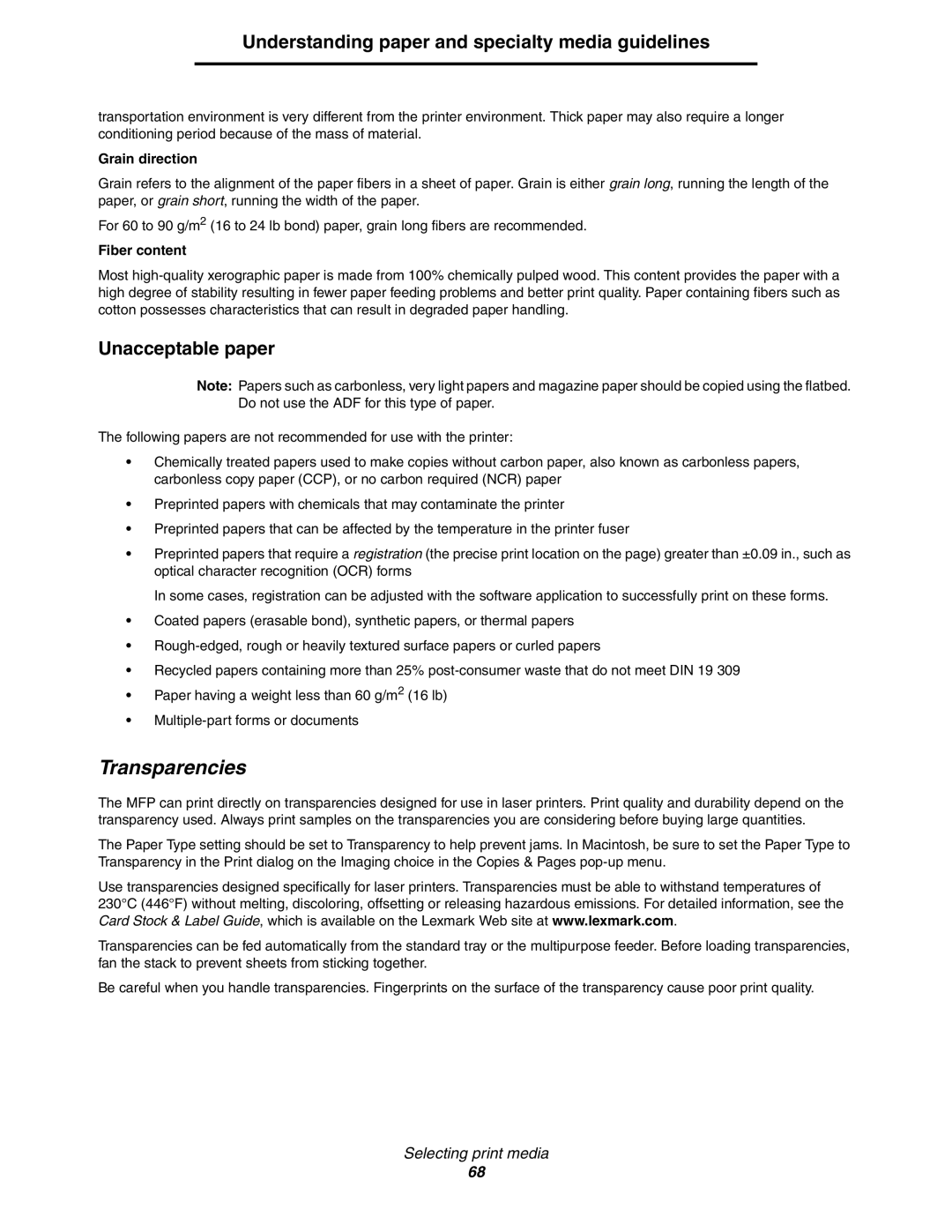Understanding paper and specialty media guidelines
transportation environment is very different from the printer environment. Thick paper may also require a longer conditioning period because of the mass of material.
Grain direction
Grain refers to the alignment of the paper fibers in a sheet of paper. Grain is either grain long, running the length of the paper, or grain short, running the width of the paper.
For 60 to 90 g/m2 (16 to 24 lb bond) paper, grain long fibers are recommended.
Fiber content
Most
Unacceptable paper
Note: Papers such as carbonless, very light papers and magazine paper should be copied using the flatbed. Do not use the ADF for this type of paper.
The following papers are not recommended for use with the printer:
•Chemically treated papers used to make copies without carbon paper, also known as carbonless papers, carbonless copy paper (CCP), or no carbon required (NCR) paper
•Preprinted papers with chemicals that may contaminate the printer
•Preprinted papers that can be affected by the temperature in the printer fuser
•Preprinted papers that require a registration (the precise print location on the page) greater than ±0.09 in., such as optical character recognition (OCR) forms
In some cases, registration can be adjusted with the software application to successfully print on these forms.
•Coated papers (erasable bond), synthetic papers, or thermal papers
•
•Recycled papers containing more than 25%
•Paper having a weight less than 60 g/m2 (16 lb)
•
Transparencies
The MFP can print directly on transparencies designed for use in laser printers. Print quality and durability depend on the transparency used. Always print samples on the transparencies you are considering before buying large quantities.
The Paper Type setting should be set to Transparency to help prevent jams. In Macintosh, be sure to set the Paper Type to Transparency in the Print dialog on the Imaging choice in the Copies & Pages
Use transparencies designed specifically for laser printers. Transparencies must be able to withstand temperatures of 230°C (446°F) without melting, discoloring, offsetting or releasing hazardous emissions. For detailed information, see the Card Stock & Label Guide, which is available on the Lexmark Web site at www.lexmark.com.
Transparencies can be fed automatically from the standard tray or the multipurpose feeder. Before loading transparencies, fan the stack to prevent sheets from sticking together.
Be careful when you handle transparencies. Fingerprints on the surface of the transparency cause poor print quality.
Selecting print media
68
